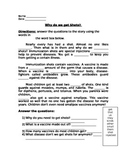292 results
Health laboratories under $5

Just Wing It! Chicken Wing Dissection Lab- Muscular and Skeletal Systems
This 3 page lab activity is a great way for your students to see first hand the anatomy of the muscles, bones, nerves, blood vessels, cartilage, tendons and ligaments! Chicken wings are inexpensive and coincidentally very similar to the human anatomy of an arm! Download includes:Pre-lab activity (comparing and identifying bones and muscles)Detailed Lab Instructions with illustrationsPost-Lab Questions (great for discussion)Teacher Answer KeyLooking for more content like this? Visit my store H
Grades:
7th - 12th
Types:
Also included in: Skeletal System Bundle
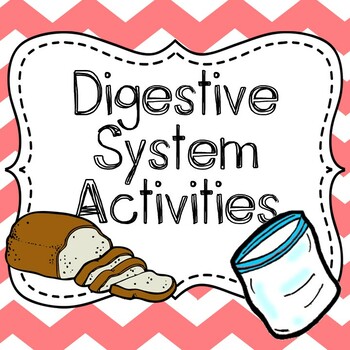
Digestive System Experiment, Digestive System Lab
Digestive System Experiment, Digestive System Lab In this activity, students will "digest" a piece of bread in a plastic baggie to model what happens in the digestive system. There are a few questions for students to answer during this investigation. This investigation will take students through the scientific method.Also included is two versions of a labeling page for students to identify the organs that make up the digestive system.These are half a page and perfect for interactive noteboo
Grades:
3rd - 6th
Types:
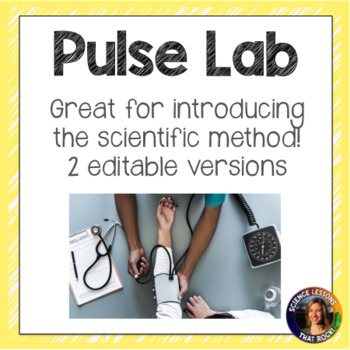
Scientific Method Lab Measuring Pulse
Need a great lab for the beginning of the school year to introduce the scientific method? In this lab students will measure their resting pulse and compare it to their pulse after different levels of physical activity. Included are 2 completely editable versions of the lab- one aimed at middle school students and one for high school students. You will receive both printable PDF versions (to be completed in class with a lab partner) and digital Google slide versions (to be completed at home durin
Grades:
7th - 10th
Types:
NGSS:
HS-LS1-3
Also included in: Human Body Systems Bundle
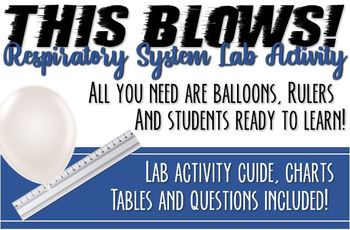
This Blows! Respiratory System Lab Activity!
In this lab, students will find their estimated Vital Capacity and then test it against their measured Vital Capacity using just a balloon and a ruler!Download includes:Lab Activity SheetLab follow-up QuestionsMale and Female Estimated Vital Capacity ChartsConversion of Balloon Diameter to Volume ChartInstructions for the teacherI hope your students enjoy this lab as much as mine do!For more resources like this, visit my store HERE!
Grades:
7th - 12th
Types:

Lab Activity: Chicken Wing Dissection - Muscular System - Skeletal System
This dissection lab is a great no-prep activity for Biology and Anatomy students to learn about anatomy and physiology of the arm. Dissection instructions, teacher tips, and student worksheets are included. A video link is also provided to give students an additional visual before or during dissection.*Please note: This lab is included in my Muscular System Unit and my Full Anatomy Curriculum.Terms addressed: tendons, ligaments, skin, triceps, biceps, articular cartilage, bone marrow, radius,
Grades:
9th - 11th
Types:
NGSS:
HS-LS1-2
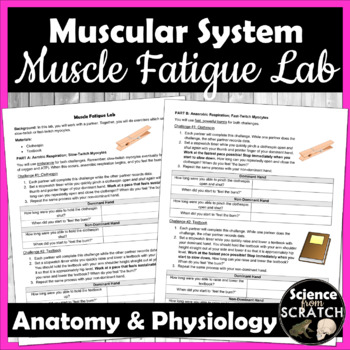
Muscle Fatigue Lab - Compare Aerobic & Anaerobic Activity | Muscular System
If you watch a track meet, it is clear that some types of athletes fatigue more quickly than others. This 2-day, fully prepped lab dives into the differences between fast-twitch and slow-twitch muscle fibers. Your students will love challenging themselves to speed and endurance challenges, but along the way they’ll learn the intricacies of aerobic versus anaerobic respiration. By the end of this lab, your students will be able to explain why fast-twitch muscle fibers fatigue more quickly than sl
Grades:
9th - 12th
Types:
Also included in: Anatomy and Physiology Full Year Curriculum
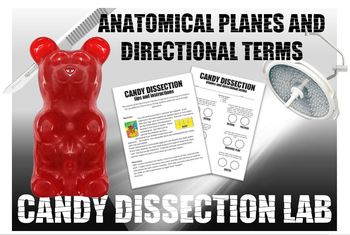
Candy Dissection Lab- Learning Anatomical Directional Terms and Planes
Nothing encourages learning more than hands-on activities. This fun lab requires very few materials and helps students learn terms like anterior, posterior, prone, supine, superior, inferior as well as the 3 major planes of the body.Materials include a Tips and Instruction sheet as well as a hand-out with instructions for students. Check out more options in my store that cover topics like this! Click here!
Grades:
7th - 12th
Types:
Also included in: The Language Of Anatomy
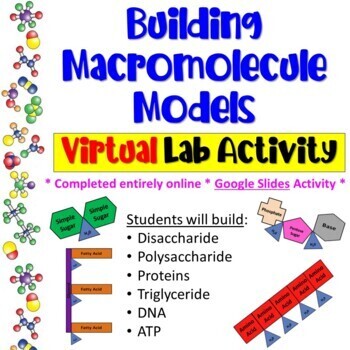
Building Macromolecule Models * Digital Lab Activity
Student Objectives: Describe the general structure, subunits, and examples for each of the four types of macromolecules. Understand the process of dehydration synthesis. Create models to show the arrangements of these polymers and macromolecules. Students will follow directions to answer questions and build a disaccharide, polysaccharide, two proteins, triglyceride, DNA, and ATP using interactive Google Slides. There are text boxes for them to type their answers and shapes they can cut/copy, pas
Grades:
8th - 10th
Types:

Endocrine System Lab Case Studies. Urinalysis.
Using simulated urine or provided results, student determine what might be going on with 5 different patients. Instruction included to use as a wet lab or dry lab. Great practice with some common endocrine disorders. Editable PPTX and Google Slides as well as a non-editable PDF included.Includes reference pages for the test, endocrine disorders chart, and a an editable urinalysis key for the wet lab. For WET LAB: This does NOT use commercially available simulated urine. It relies on mak
Subjects:
Grades:
9th - 12th
Types:
Also included in: Anatomy & Physiology Curriculum Bundle

Medical Math: Pharmacy Technician Lab
This lab activity is perfect for students who are learning about pharmacy technicians, medical math, or dosage problems. Great Health Science activity! Answer Key included on Page 3.
Subjects:
Grades:
9th - 12th
Types:

Prokaryote vs. Eukaryote Activity. Digital and PDF.
Teaching about the diversity of cells? Go beyond the normal characteristics of prokaryotes vs. eukaryotes and plant vs. animal cells and have students look at ACTUAL cellular diversity examples. This can can be set up as stations around the room or if you have 1:1 it can easily be done from their seat or even at home. You can use microscopes and slides if you have that available, but I have included images for everything you will need. >>> This product is included in the Cell Unit Bun
Grades:
7th - 10th
Types:
Also included in: Biology Curriculum Bundle
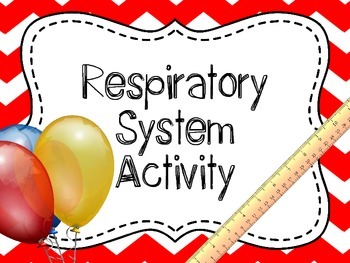
Respiratory System Investigation, Respiratory System Lab
Respiratory System Experiment, Respiratory System Lab: In this investigation, students will measure their lung capacity by blowing up a balloon with a partner. They will compare their results with their partners and answer a few questions. This investigation will take students through the scientific method.These are half a page and perfect for interactive notebooks.I ♥ Followers! All new products are 20% off for the first 24 hours after they are posted! Be the first to learn about new products
Grades:
3rd - 6th
Types:
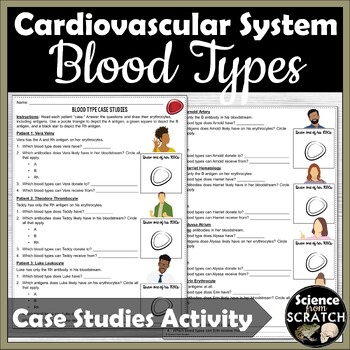
Blood Type Case Studies Activity | Cardiovascular System | Anatomy
Vera Veiny has the A and Rh antigens. Which blood type does she have? Which antibodies does she have? Who can she donate to? Who can she receive from? My 12th grade students solidify their understanding of Blood Types with this lesson. You should utilize this resource AFTER teaching Blood Types to your students. I recommend using this Blood Type Activity and then solidifying that understanding with these Blood Type Doodle Notes.Includes both digital & print versions!The 3-page worksheet goes
Grades:
10th - 12th
Types:
Also included in: Anatomy and Physiology Full Year Curriculum
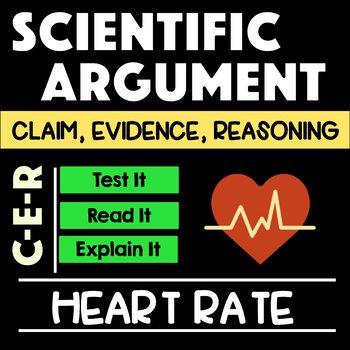
Exercise and Heart Rate CER with Claim Evidence Reasoning
This activity investigates the relationship between heart rate and exercise and students write a CER argument to explain this relationship. This can be used to teach about the circulatory system, cellular respiration, exercise and health, and homeostasis of the body. Students take their resting heart rate and then do 1 minute of exercise and measure their heart rate again. Students then read a passage about changes in heart rate then write an argument to explain how exercise affects heart rate.
Grades:
4th - 8th
Types:
Also included in: Life Science CER Bundle with Claim Evidence Reasoning

Integumentary System: Temperature and the Skin Lab
Who else wants students who are excited to learn more about their integumentary system?
Students will demonstrate how their skin and hair work together to maintain a safe body temperature.
This low-prep activity requires very few materials and includes step by step instructions.
There are four parts to the investigation: Rubbing Alcohol on the Skin, Rubbing Alcohol on a Thermometer, Your Skin and Hair, and Dry Thermometer. Includes short answer questions for the students to answer as they co
Grades:
5th - 9th
Types:
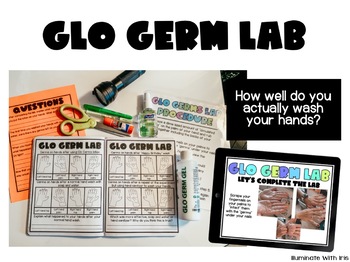
Glo Germs Lab Activity
This product was designed to be used with an interactive notebook (or just print them as worksheets, and google capabilities to present the notes to the students in the classroom or digitally. You will also need to purchase 1. GLO GERMS or any other brand of simulated germs, here is the amazon link that I use: GLO Germs LinkBlack light flash light, here is the amazon link to the ones that I use: BLACK LIGHT LINKStudents will cut and glue interactive notebook sheets into their notebook (or just u
Subjects:
Grades:
4th - 12th
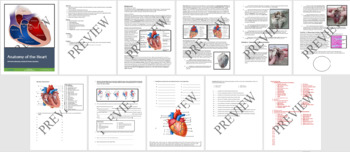
Anatomy of the Heart All-in-One Sheep Dissection Lab Activity & Review Worksheet
Make teaching Anatomy & Physiology easy with this fully editable Anatomy of the Heart All-in-One Sheep Dissection Lab Activity and Review Worksheet. Get the most out of your sheep heart dissection. Complete student background information is included with labeled images for identifying internal and external sheep heart anatomical structures. No prior knowledge of heart anatomy is required. Students learn both internal and external anatomy of the heart, the flow of blood through the heart, a
Grades:
4th - 12th, Higher Education, Adult Education, Staff
Types:
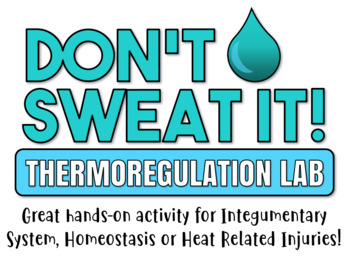
Don't Sweat It! Thermoregulation Lab- Integumentary System and Homeostasis
This lab investigates the body's thermoregulation control by identifying sweat gland concentration in the body as well as the changes that occur when the thermal environment varies.The supplies are minimal (copy paper, rulers, iodine, cotton swabs) but this lab is very engaging and sparks a lot of curiosity in students.Using iodine, students will be able to observe their own sweat gland distribution and then test the impact that cold and heat have on the concentration of sweat in those glands.Do
Grades:
9th - 12th
Types:
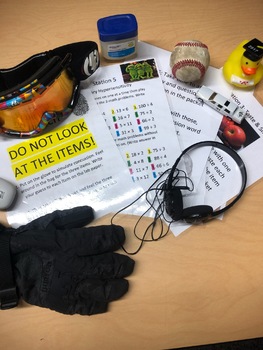
Concussion & TBI (Traumatic Brain Injury) Lesson & Lab
I created a Concussion & TBI lab that my kids loved. Students will mimic a brain injury in 6 of the stations that I set up. This lesson is very hands on and student centered!Included:1. Lab Worksheet2. Printable Station Cards 3. Danielson Lesson Plan4. Short 6 Slide Powerpoint on Concussions & TBIsStations include:1. Impaired Touch Station2. Impaired Vision Station3. Impaired Smell & Taste Station4. Impaired Memory Station5. Hypersensitivity Station6. Survey & Questions StationHa
Subjects:
Grades:
5th - 12th
Types:

Pain Simulation Lab, 5th Vital Sign, Pain Assessment, Nervous System
Looking for a fun activity for your pain, vital sign unit or sensory unit? This is it! Your students will love this hands-on activity with minimal prep and supplies. It is difficult to teach students about assessing pain because everyone responds differently. In this lab students will be subjected to the same noxious stimuli for the same amount of time. Then compare and contrast how students respond differently by evaluating how they rated their pain on a 0-10 pain scale. This lab includes Teach
Grades:
11th - 12th, Higher Education, Adult Education
Types:
Also included in: Vital Signs! A Growing Bundle
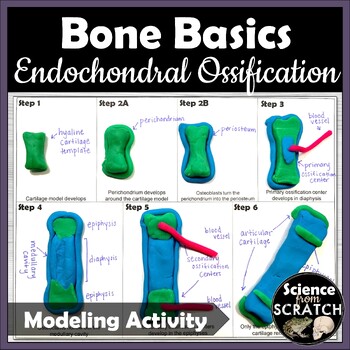
Bone Ossification Modeling Activity | Skeletal System Unit
Endochondral ossification used to be one of my least favorite things to teach in anatomy - but this year I have it down to a science! Rather than boring my students with lecture for them to remember little information about the process, I changed it up this year and had my students read a short passage on endochondral ossification… and the best part is that the passage includes instructions for them to build models of each step of endochondral ossification! To complete this activity, you need en
Grades:
10th - 12th
Types:
Also included in: Anatomy and Physiology Full Year Curriculum

Don’t Get Caught Germy Handed Lab - Germ Glo Hand Washing Lab
Washing hands is always an important skill to practice, especially now! While teaching about the impact of bacteria and viruses in our world, I like to use this lab to teach the effectiveness of hand-washing. Students are always amazed at how many “germs” are still on their hands after their first quick wash. Students also are able to see all the areas where they miss in their washing so that they can be more effective when washing their hands in the future. #Lifeisbetterwithcleanhands :)This
Subjects:
Grades:
4th - 12th
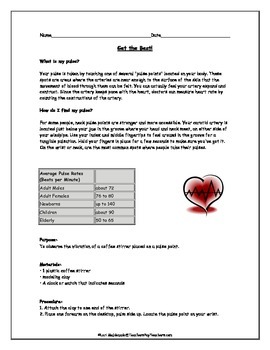
Cardiovascular System: Heart Rate Lab
This activity begins with a brief description of what the student's pulse rate is and how to find it.
Students will measure their resting heart rate, heart rate while running in place for two minutes, and their resting heart rate.
Students will then measure their heart rate by observing the vibration of a coffee stirrer when it is placed on a pulse point with a piece of clay on their wrist.
I like to have the students work with a partner for this activity just in case they have difficult
Grades:
5th - 9th
Types:
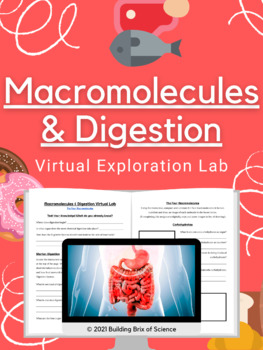
Macromolecules & Digestion Virtual Exploration Lab
What are the four major macromolecules? In this virtual lab, students will learn about carbohydrates, fats, proteins, and nucleic acids and analyze how humans digest and absorb them. Students will also:⚗️Test their Pre-Existing Knowledge of the Digestive System⚗️Identify the Difference between Chemical & Mechanical Digestion⚗️Compare & Contrast the Four Macromolecules⚗️Describe how Macromolecules are Digested & Transported through the BodyNOTE: This activity links to the free Interac
Subjects:
Grades:
6th - 12th
Types:
NGSS:
HS-LS1-6
Also included in: South Carolina 6th Grade Science Growing Full Activity Bundle
Showing 1-24 of 292 results




